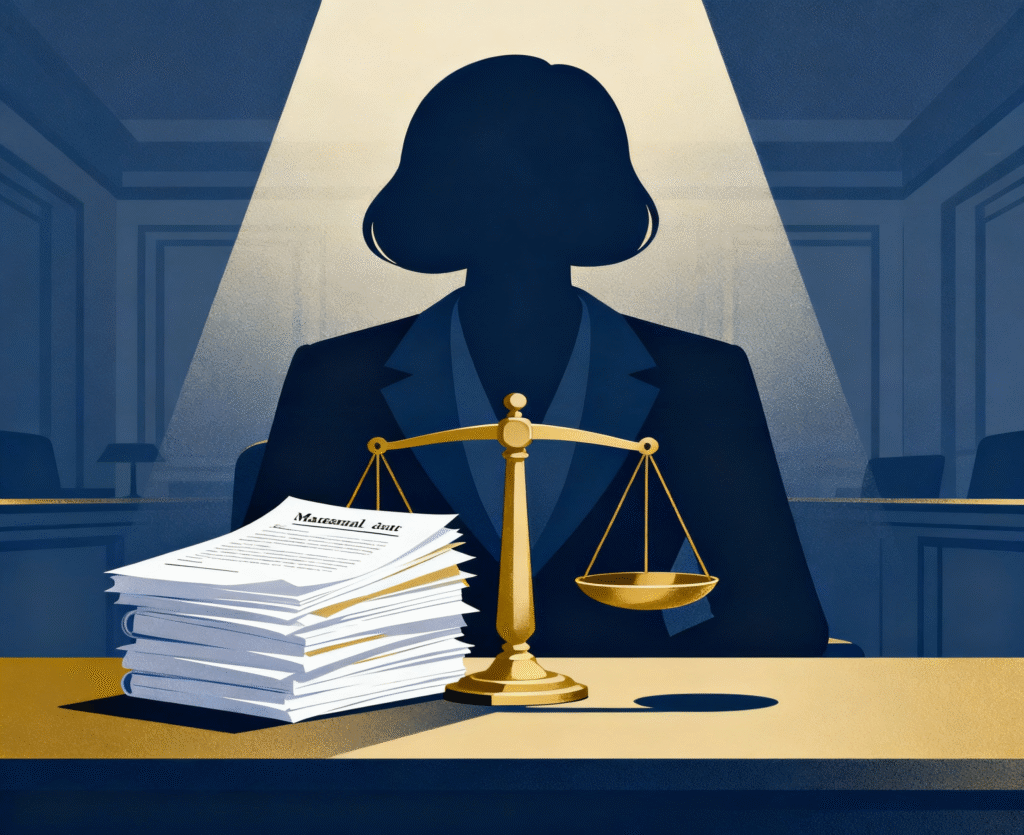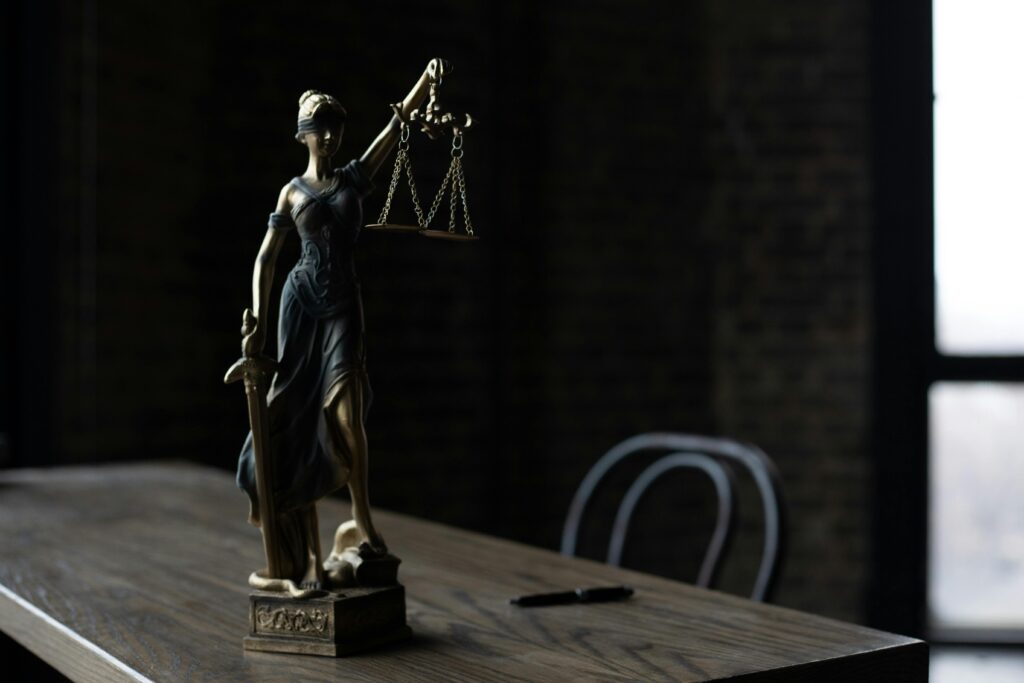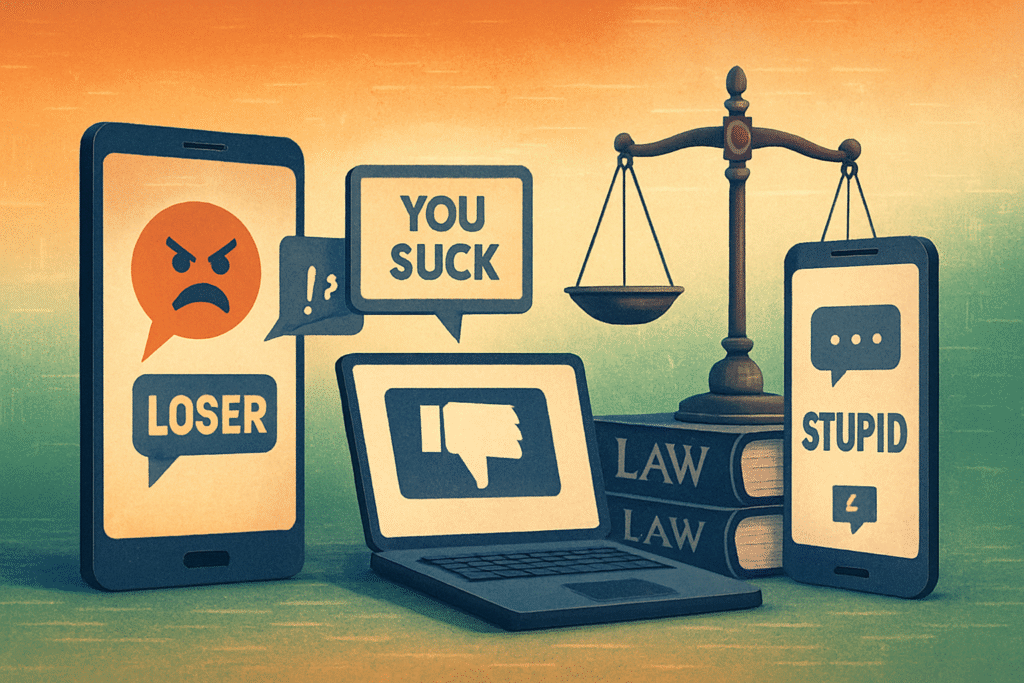Published On: 21st August, 2024
Facts: –
The Sabarimala Temple is revered as the residence of Lord Ayyappa. is well-known for its unusual religious rituals, in which followers abstain from worldly pleasures for 41 days prior to visiting the temple. Lord Ayyappa is revered as a celibate god by his devotees. To preserve celibacy, women in their “menstruating years”—that is, those between the ages of 10 and 50—were traditionally forbidden from visiting the temple.
[1]The Supreme Court received a PIL from the Indian Young Lawyers Association in 2006 contesting the Sabarimala Temple’s ban on women entering the premises. The organization said that because the custom is “insulting to the inherent worth of women,” it violates Article 14’s right to equality. “Every individual is similarly guaranteed freedom of conscience and the ability freely to profess, practice, and propagate religion,” according to Article 25 concerning freedom of religion. That right is violated when female devotees are excluded. Additionally, the provisions of Rule 3(b) of the Kerala Hindu Places of Public Worship (Permission of Entry) Rules, 1965, (Public Worship Rules) safeguarded the Sabarimala tradition.
Petitioner: Indian Young Lawyers Association; Dr Laxmi Shastiri; Prerna Kumari; Alka Sharma; Sudha Pal
Lawyers: R. P. Gupta; Raju Ramachandran (Amicus Curiae); K. Ramamoorthy (Amicus Curiae);
Respondent: State of Kerala, Travancore Devaswom Board; Chief Tanthri of Sabarimala Temple; District Magistrate of Pathanamthitta; Nair Service Society; Akhil Bhartiya Ayyappa Seva Sangham; Ayyappa Seva Samithi; Ayyappa Pooja Samithi; Dharma Sanstha Seva Samajam; Akhil Bharatiya Malayalee Sangh; Sabarimala Ayyappa Seva Samajam; Kerala Kshetra Samarak Shana Samithi; Pandalam Kottaram Nirvahaka Sangham; Sabrimala Custom Protection Forum
Lawyers: Venugopal, Jaideep Gupta, Liz Mathew, V. Giri, Rakesh Dwivedi, and K. Radhakrishnan
Intervenor: Nikita Azad (Arora); D. V. Ramana Reddy; K. K. Sabu; Kantaru Rajeevaru; Rekha Ratheethnam; Athma Divine Trust; Rahul Easwar; Chetna Conscience of Women
Lawyers: Indira Jaising; V.K. Bijua[2]
Issues: –
- Does the Sabarimala Temple’s ban on menstruating women infringe their rights to equality, freedom from discrimination, and the removal of untouchability?
- Do followers of Lord Ayyappa have the authority to run their individual affairs in areas of religion because they are a distinct religious sect?
- Does Article 25 consider the exclusion of women to be an “essential religious practice”?
- Could a “religious denomination” be able to exclude women between the ages of 10 and 50 from entering places where people worship according to Rule 3 of the Kerala Hindu Places of Public Worship (Authorisation of Entry) Rules?
- Does the Community Worship Rule, which permits the tradition, contradict the original laws that prohibited discriminatory practices?[3]
Procedural History
- First Submission and Kerala High Court Ruling (1991)
S. Mahendran v. Travancore Devaswom Board Secretary (1991): The legal dispute about women’s admission to the Sabarimala Temple started with this case. A follower by the name of S. Mahendran filed a writ suit in the Kerala High Court, requesting an order to uphold the ban on women between the ages of 10 and 50 who are menstruation from attending the temple. The Travancore Devaswom Board won their case in the High Court, preserving the long-standing tradition of limiting women’s admission
- 2006-Filed Public Interest Litigation (PIL)
PIL filing: The Indian Young Lawyers Association and five female lawyers filed a Public Interest Litigation (PIL) in the Apex Court in 2006, contesting the legitimacy of the temple’s policy of excluding menstruation women from entering. The petitioners said that the limitation was unfair to women because it was founded on patriarchal ideas that denigrated them.
- Supreme Court Memorandum (2008)
Acceptance of the Case: The PIL was accepted by the Supreme Court of India in 2008, and the State of Kerala and the Travancore Devaswom Board were notified to reply to the petitioners’ accusations. The case attracted a lot of attention since it brought up crucial constitutional issues on how to strike a balance between gender equality and religious freedom.
- Constitutional Bench Referral (2016)
With relation to the Constitutional Bench: The Supreme Court assigned the case to a five-judge constitutional bench in 2016 due to the intricacy and constitutional importance of the issues at hand. This court was entrusted with investigating whether the Sabarimala Temple’s policy of excluding women from entering constituted a basic practice of faith as defined by Article 25 or if it infringed upon the fundamental liberties guaranteed by the Constitution. Chief Justice Dipak Misra, together with Justices R.F. Nariman, A.M. Khanwilkar, D.Y. Chandrachud, and Indu Malhotra, made up the bench.[4]
- Hearings held in 2018 before the Constitutional Bench
Prolonged Hearings: Both the petitioners and the respondents made arguments throughout the lengthy hearings held before the constitutional bench. The petitioners claimed that excluding women was unfair and went against their basic rights. They said that while menstruation is a normal biological function, it shouldn’t be a reason for prejudice.
- Judgement of the Supreme Court (September 28, 2018)
Landmark Decision: The Supreme Court rendered its decision on the 28th of September, 2018. The Court concluded that the expulsion of women from the Sabarimala Temple was discriminatory and unconstitutional by a majority vote of 4:1.
- 2019’s Larger Bench Referral
Review Petition Referred to a Larger Bench: In November 2019, the Supreme Court assigned the review petitions to an expanded panel consisting of seven judges to look at the more general issues of gender equality and freedom of religion and conscience. The wider bench was entrusted with taking a more thorough approach to the concerns, taking into account how the ruling would affect other religious traditions as well.[5][6]
Rules:
The case of the Indian Young Lawyers Association v. State of Kerala (2018) concerned the interpretation of many constitutional articles including freedom of religion and gender equality. The following statutes are pertinent to the Indian Constitution:
- Article 14: Equality before the Law
Assures equal protection under the law and equality before the law within India’s borders.
Relevance: It was argued that excluding women from the temple violated their right to equality and was discriminatory.
- The Prohibition of Discrimination in Article 15
Prohibits discrimination on the basis of sex, religion, caste, race, or place of birth.
Relevance: It was claimed that this article was broken by the sex-based exclusion.
- The Abolition of Untouchability Clause 17
Eliminates untouchability and prohibits its application in any manner.
Pertinence: Menstruation-based discrimination against women was compared to untouchability.
- Article 25: Freedom of Conscience and Free Practice, Profession, and Propagation of Religion
Provides protection for the right to freely practice and spread religion, subject to laws governing morals, public health, and public order.
Relevance: According to the responders, this article’s omission is a necessary religious practice.
- Article 26: Authority to Handle Religious Matters
Gives religious groups the autonomy to handle their own business regarding their faith.
Significance: The individuals affirmed their entitlement to oversee temple matters, encompassing the disenfranchisement of women.
- Fundamental Duties, Article 51A(e)
Every citizen has a responsibility to uphold peace and abstain from actions that diminish the worth of women.[7]
Relevance: Applied to promote gender parity and oppose actions that violate women’s dignity.[8]
Analysis/Application: –
Arguments of the Petitioners:
1. Fundamental Rights Violated:
The petitioners claimed that Articles 14, 15, and 17 of the Indian Constitution had been violated by excluding women between the ages of 10 to 50 from entering the Sabarimala Temple. They argued that the ban was based only on women and the physiological mechanism of menstruation, which is a normal biological function, and that it was thus discriminatory.
They stressed that the rights of women to equal treatment and freedom from discrimination, as stipulated by Article 14, were violated by the exclusion. Moreover, Article 15 expressly forbids discrimination on the basis of gender, and Article 17 does away with the concept of untouchability—which the petitioners claimed was comparable to excluding women from temples.[9]
2. Religious liberty:
The petitioners said that Article 25, which guarantees the freedom to freely practice, profess, and promote religion, was infringed by the exclusion. They maintained that since the prohibition placed on women wasn’t a necessary component of religion, Article 25 immunity was not warranted.
They said that a custom should not be permitted to supersede fundamental rights since it is an expression of patriarchal attitudes rather than a core component of the faith.[10]
3. Public worship
The Kerala Hindu Places of Public Worship (Authorization of Entry) Rules, 1965, Rule 3(b) which permitted the exclusion, was cited by the petitioners as being unconstitutional. They said that the regulation went against the guarantees of equality and non-discrimination found in the Indian Constitution.[11]
Arguments of the Respondent
1. Crucial Religious Activities:
The respondents, which included the government of Kerala and the Travancore Devaswom Board, said that the Sabarimala Temple’s prohibition against women’s admittance was a necessary religious practice honoring the celibate god Lord Ayyappa (Naishtika Brahmachari).
They said that the custom was fundamental to maintaining the purity of the shrine and the religious feelings of the devotees, as it was founded on the deity’s celibacy.
2. Article 25 and 26 Protection:
The respondents argued that Article 25, which guarantees the freedom of conscience as well as the right to profess, practice, and spread religion, safeguarded the practice. Additionally, they cited Article 26, which grants each religious group the autonomy to conduct its own business with regard to religion.
They said that the prohibition was a question of religious doctrine and that courts had no right to meddle in matters pertaining to deeply ingrained religious customs.[12]
3. Judicial Non-Interference in Religious Matters:
The answers stressed the importance of judges staying out of religious concerns. They maintained that courts need to honor adherents’ religious convictions and customs rather than forcing them to adopt secular standards.
Citing earlier rulings that supported religious denominations’ autonomy in running their business, they said that the Sabarimala custom had to be retained as an element of the constitutionally recognized right to religious freedom.[13]
Supreme Court’s Observations and Analysis
Constitutional rights violated:
Chief Justice Dipak Misra, together with Justices R.F. Nariman, A.M. Khanwilkar, and D.Y. Chandrachud, issued the majority ruling, which maintained that excluding women from religious institutions violated their fundamental rights to equality and non-discrimination.
The Court noted that it is unlawful for any practice to enslave women and restrict their ability to exercise their fundamental rights.
Not a Necessary Religious Activity:
After examining the practice’s need in light of Article 25, the Court concluded that women’s exclusion was not a necessary religious practice.
Judge D.Y. Chandrachud highlighted that the exclusion failed the essentiality test since it was grounded in patriarchal ideas and lacked biblical support.
Section 17 and Inviolability:
The Court observed that it was illegal under Article 17 to practice untouchability, which is equivalent to excluding women based only on their menstrual cycle.
Justice R.F. Nariman emphasized that the practice upheld women’s social marginalization and prejudice, which runs counter to the equality requirement of the constitution.
In her dissenting opinion, Justice Indu Malhotra contended that the religious group had to decide whether a behavior is fundamental to the faith. In her view, the case involves deeply held religious beliefs, and the Court shouldn’t infringe upon the rights of religious groups to practice their religion as guaranteed by Articles 25 and 26.[14][15]
CONCLUSION
In the seminal case of the Indian Young Lawyers Association v. State of Kerala, the Supreme Court upheld gender equality and prohibited discrimination. The Court ruled, 4:1, that it was illegal to exclude women between the ages of 10 and 50 from Sabarimala Temple, citing violations of Articles 14, 15, and 17 of the Constitution. According to the majority, the practice supported discriminatory patriarchal norms and was not a necessary religious practice. Justice Indu Malhotra was the only one to disagree, and he made the case for honoring religious customs. The decision was a major step in the direction of advancing gender equality in Indian religious traditions.
The verdict reflected the strong cultural and religious feelings involved and caused a great deal of controversy and opposition, especially among traditionalists and Lord Ayyappa believers. In addition to highlighting the continuous conflict between religious beliefs and constitutional ideals, the case was a significant step toward advancing gender equality in Indian religious settings.
Reference(s):
[1] Sneha Mahawar, ‘Indian Young Lawyers Association vs. the State of Kerala (2018) : A Case Analysis’ (iPleaders, 7 November 2023) <https://blog.ipleaders.in/indian-young-lawyers-association-vs-the-state-of-kerala-2018-a-case-analysis/> accessed 12 July 2024.
[2] ‘Sabarimala Temple Entry’ (n 1).
[3] ibid.
[4] ‘Indian Young Lawyers Association vs The State Of Kerala on 28 September 2018’ <https://indiankanoon.org/doc/163639357/> accessed 12 July 2024.
[5] ‘Sabarimala Case: No Dissenting Judge Part of Constitution Bench – The Hindu’ <https://www.thehindu.com/news/national/kerala/sabarimala-case-no-dissenting-judge-part-of-constitution-bench/article30504831.ece> accessed 12 July 2024.
[6] ‘9-Judge Bench Reference in Sabarimala Review: Lawyers to Meet on Jan 17 to Chart out Course of Hearing’ <https://www.barandbench.com/news/9-judge-bench-reference-in-sabarimala-review-lawyers-to-meet-on-jan-17-to-chart-out-course-of-hearing> accessed 12 July 2024.
[7] ‘COI…Pdf’ <https://lddashboard.legislative.gov.in/sites/default/files/COI…pdf> accessed 12 July 2024.
[8] Mahawar (n 2).
[9] ‘Indian Young Lawyers Association vs The State Of Kerala on 28 September, 2018’ (n 5).
[10] ‘Case Summary: Indian Young Lawyers Association & Ors vs. The State of Kerala & Ors. – LawLex.Org’ <https://lawlex.org/case-summary/case-summary-indian-young-lawyers-association-ors-vs-the-state-of-kerala-ors/26497> accessed 12 July 2024.
[11] ‘Indian Young Lawyers Association vs The State Of Kerala on 28 September, 2018’ (n 5).
[12] ibid.
[13] ibid.
[14] ‘Sabarimala Temple Entry’ (n 1).
[15] ‘Indian Young Lawyers Association vs The State Of Kerala on 28 September, 2018’ (n 5).



